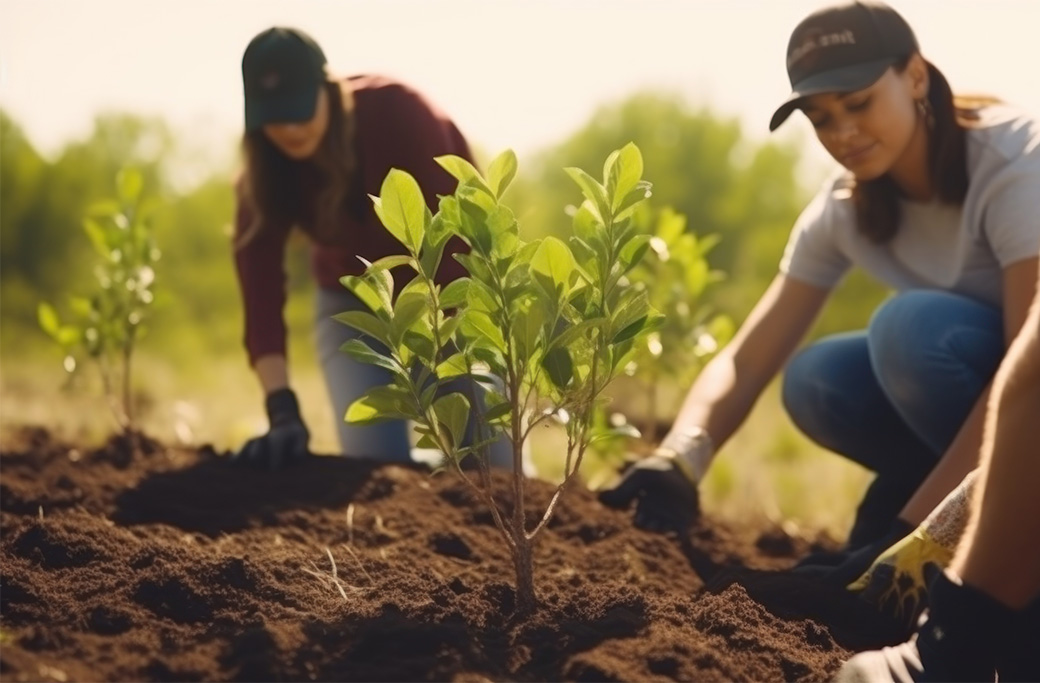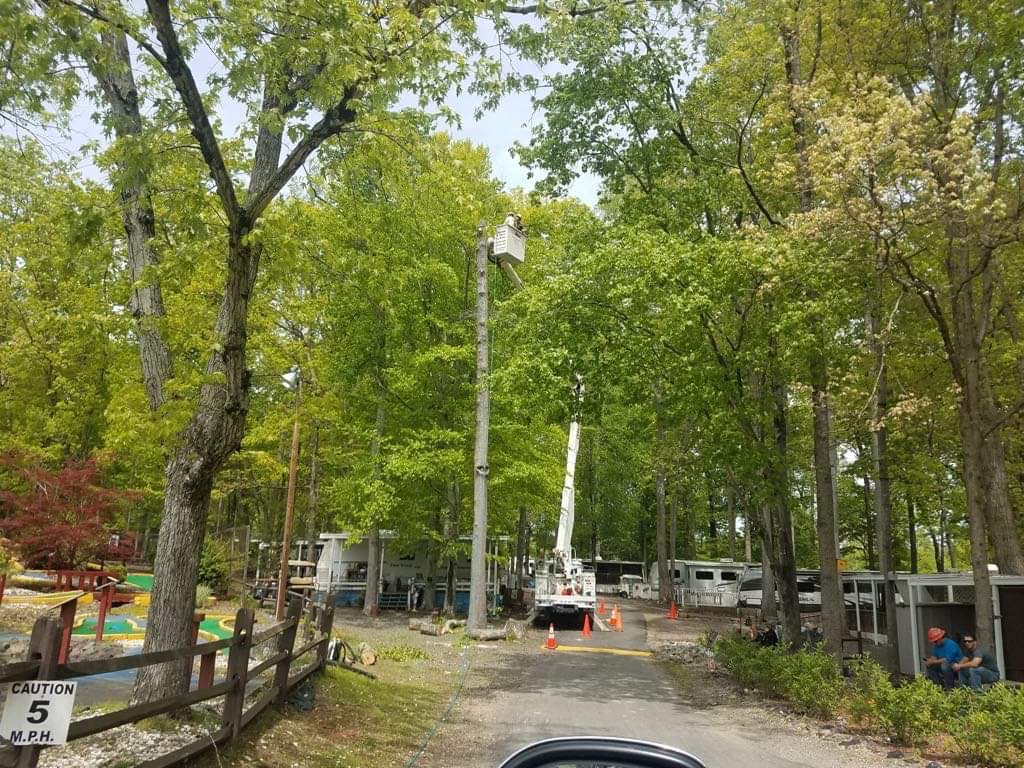Earth Day serves as a poignant annual reminder that the health of our planet hinges on small actions collectively compounding into monumental change. In this spirit, Shannon & Sons Tree Service invites you to elevate your environmental stewardship by implementing 10 eco-friendly tree care practices. Whether you’re a homeowner with a heart for sustainability, a tree care enthusiast, or an environmental activist, we aim to equip you with the knowledge to make a significant difference, not just on Earth Day, but every day.
The Benefits of Eco-Friendly Tree Care
Trees are the unsung heroes of our planet, quietly going about their vital task of cleaning the air, conserving energy, and supporting wildlife. By adopting practices that complement nature, each of us can magnify the positive impact of trees. Not only do eco-friendly tree care strategies bolster the environment, but they also nurture a sense of community wellbeing and personal satisfaction.
Awareness and Appreciation
The simple act of recognizing the role trees play in our ecosystem can be a powerful motivator toward eco-friendly practices. Trees improve air quality, reduce stormwater runoff, and lower urban temperatures through the absorption of carbon dioxide and other pollutants. They also provide a natural habitat for birds and other wildlife.
Long-term Preservation
It’s vital to comprehend the relationship between trees and climate change. Every effort to promote tree health and longevity is another brick in the fortress against environmental degradation. With dedication to sustainable tree care, we ensure that future generations can also enjoy the myriad benefits of these green giants.
10 Eco-Friendly Practices for Tree Care
Now, it’s time to roll up your sleeves and act! Here’s a breakdown of the 10 eco-friendly tree care practices that we at Shannon & Sons Tree Service promote and practice daily.
1. Mulching with Organic Materials
Mulching with natural materials such as bark, wood chips, and compost helps to regulate soil temperature, retain moisture, and suppress weeds without depleting the environment of synthetic compounds.
The Mulch Must-Do’s
-
-
- Create a mulch ring around the base of your trees, applying a layer that’s 2 to 4 inches deep.
- Be mindful of over-mulching, ensuring the mulch touches the tree trunk while leaving the root flare exposed.
- Replenish mulch as needed, generally once a year, to maintain an ideal growing environment for your trees.
-
2. Proper Tree Pruning Techniques
Pruning is an essential part of tree care that, when done correctly, encourages healthy growth and structural stability.
The Art of Pruning for Prosperity
-
-
- Learn to prune at the right time of year, which varies for different tree species.
- Identify the branch collar and the branch ridge to make cuts that promote rapid healing and prevent decay.
- Focus on the ‘3 D’s’: dead, diseased, and damaged branches should be your main targets for removal.
-
3. Watering Strategies to Conserve Resources
Effective watering is a key element in the success of a tree, especially during dry spells, but it must be done in a way that doesn’t waste water.
Smarter Watering for Stronger Trees
-
-
- Use a slow delivery method like a soaker hose or drip irrigation to direct water where it’s needed most.
- Water deeply and infrequently to encourage deep root growth, typically 1 inch per week.
- Consider water retention systems around trees to make the most of natural precipitation.
-
4. Using Renewable Energy for Tree Services
Sustainable energy sources reduce the carbon footprint of tree services, contributing to a cleaner environment and healthier communities.
Going Green with Services
-
-
- Invest in battery-operated tools for tree maintenance.
- Utilize solar and wind energy to power your tree-service operations.
- Consider electric or hybrid vehicles to transport equipment.
-
5. Composting Tree Waste
Transforming tree waste into nutrient-rich compost is a win-win. It not only reduces landfill waste but also provides a natural soil amendment.
From Waste to Wealthy Soil
-
-
- Collect and chip pruned branches and small-diameter trees for composting.
- Allow the materials to decompose naturally, turning them occasionally to ensure even breakdown.
- Use the finished compost to enrich garden beds and support plant health.
-
6. Promoting Native Tree Species
Native trees have evolved to thrive in their local environments, making them the most resilient and low-maintenance options.
The Case for Native Trees
-
-
- Research which tree species are native to your area and plant accordingly.
- Choose trees that are suited to your local soil and climate conditions.
- Foster biodiversity by planting a variety of native trees to support a healthy ecosystem.
-
7. Integrated Pest Management
Adopting an Integrated Pest Management (IPM) approach minimizes the use of harmful chemicals while keeping trees healthy and pest-free.
IPM in Action
-
-
- Regularly monitor tree health to detect and treat pest issues early.
- Encourage natural pest predators like ladybugs and birds to control infestations.
- Employ targeted treatments, such as horticultural oils, to manage pests effectively and environmentally safely.
-
8. Adopting Sustainable Arborist Tools
Investing in high-quality, durable, and eco-friendly tools not only reduces waste but also enhances safety and efficiency.
The Right Tools for a Gentle Touch
-
-
- Choose hand tools and power equipment designed for precision and minimal environmental impact.
- Maintain tools well to prolong their lifespan and optimize their performance.
- Dispose of old tools responsibly by recycling or repurposing where possible.
-
9. Educating the Community on Tree Care
Knowledge is power, and empowering your community with tree care tips can lead to a more widespread adoption of eco-friendly practices.
Spreading the Eco-Friendly Word
-
-
- Host workshops and seminars on eco-friendly tree care practices.
- Engage with local schools and community organizations to organize tree care events.
- Utilize social media and other platforms to share educational content on tree care and sustainability.
-
10. Participating in Tree-Planting Initiatives
One of the most direct ways to promote an eco-friendly environment is by planting and caring for trees.
Planting for the Future
-
-
- Join community tree-planting events to contribute to local green initiatives.
- Volunteer with environmental organizations to expand tree cover and forestation.
- Adopt or sponsor trees in your area, taking responsibility for their long-term care and wellbeing.
-
Eco-Friendly Tree Care at Home
Eager to make a change? Here are some practical tips for incorporating eco-friendly tree care into your daily routine.
Actionable Eco Steps for Homeowners
- Reassess your landscaping to incorporate more sustainable choices, including native trees and plants.
- Minimize the use of fertilizers and pesticides, opting for natural alternatives and better yet, prevention strategies through good arboriculture.
- Get involved in local environmental groups and initiatives to learn and share more about eco-friendly tree care.
Celebrating Earth Day With Eco-Friendly Tree Care
As we celebrate Earth Day and consider our ongoing commitment to the environment, Shannon & Sons Tree Service urges everyone to reflect on the role trees play in the health of our planet. By adopting eco-friendly practices within our community, we can all contribute to a more sustainable and eco-conscious future. Take the first step today and share this knowledge with others. Engage with us to learn more about how tree care can be both effective and gentle on the earth. Every positive action, no matter how small, counts towards a healthier, greener world.
At Shannon & Sons Tree Service, we are dedicated to the well-being of our environment and the communities we serve. We invite you to join us in our mission to nurture and protect the urban canopy for future generations. Contact us today to learn how you can contribute to a greener, healthier planet. Together, we can make a lasting impact. Happy tree-loving, Earth Day enthusiasts. It’s time to roll up our collective sleeves and nurture, conserve, and celebrate the arboreal wonders around us.



